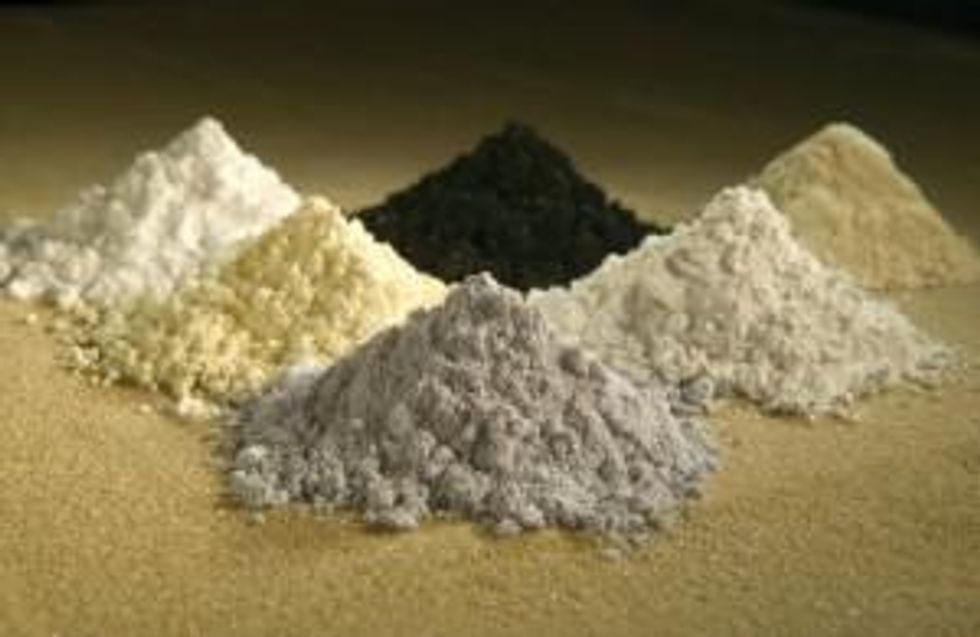Texas Rare Earth Resources Making Progress with K-Tech Separation Process
Texas Rare Earth announced a key advancement in the development of its rare earth element separation process on Tuesday. Using its continuous ion chromatography methodology, K-Technologies has removed much of the rare earths lanthanum and cerium from a pregnant leach solution containing rare earths from Texas Rare Earth’s Round Top deposit.
Using its continuous ion chromatography (CIC) methodology, K-Technologies has removed much of the rare earths lanthanum and cerium from a pregnant leach solution. The solution was produced using ore from Texas Rare Earth’s Round Top deposit, which has not yet been developed.
The achievement marks the completion of the first phase of the second stage of process development — designed to first remove lanthanum and cerium from the solution — and the company’s release states that the resulting product can be processed to make a “commercially marketable mid/heavy (MH) rare earth mixed concentrate.”
Overall, after this phase of K-tech’s procedure is used, lanthanum and cerium make up less than 8 percent of total rare earths present in the stream. Meanwhile, more valuable REEs such as praseodymium, neodymium, gadolinium, terbium, dysprosium and yttrium make up 68 percent of the product stream.
That’s an important consideration as cerium and lanthanum have been pegged as being vastly oversupplied by market watchers, and they garner relatively cheap prices relative to other rare earths. In fact, Ryan Castilloux of Adamas Intelligence has previously suggested companies would be wise to simply treat cerium as a waste product, since the the metal’s low price “does not warrant the cost of separation and purification.”
“Removing the low value lanthanum and cerium at an early stage with minimal separation effort bodes well for the overall efficiency and economy of this process and also provides us the option of making a marketable, praseodymium/neodymium plus mid/heavy rare earth concentrate,” said Texas Rare Earth CEO Dan Gorski in Tuesday’s release.
Rare earth separation or mixed concentrates?
While Gorski said that his company will “examine the economic possibilities of producing and marketing such a concentrate,” the main goal at the moment is to further refine the concentrate to “produce individual high purity REE products that meet all commercial specifications.”
However, according to Jack Lifton, a well-known expert in the metals industry and a director of Texas Rare Earths, the company could also do well selling concentrates to separation providers. That’s because he sees a market for clean mixed REE concentrates — ones that are “free of radioactivity and of separation chemistry interfering base metals.”
“In particular the market discounts for clean mixtures of the critical heavy rare earths are small enough to warrant marketing them as soon as they are available,” he said in a release. “In fact the discounts offered by separation providers for terbium and dysprosium mixed concentrates are so small that the further strategy of separating them into individual rare earth products, either in-house or by tolling, is not economical unless further downstream processing into, for example, magnet alloys, is the target.”
Texas Rare Earth notes that the materials used in the K-Tech separation process are commonly available, non-toxic and non-flammable, and that the equipment needed for the process is also commercially available. The company is confident in K-Tech’s ability to scale the CIC process up to commercial volumes, and intends to conduct further pilot plant testing on the process using much larger quantities of feedstock.
At close of day on Tuesday, shares of Texas Rare Earth Resources were up 11.35 percent, trading at $0.345.
Securities Disclosure: I, Teresa Matich, hold no direct investment interest in any company mentioned in this article.
Related reading:
Ryan Castilloux: Magnet Rare Earths Prices Moving Higher on Increased Demand
